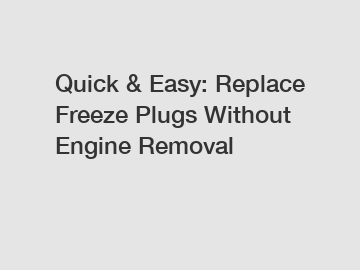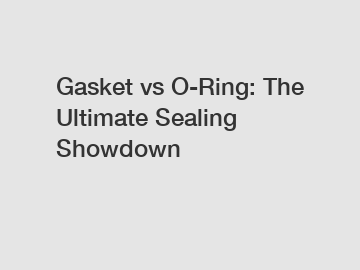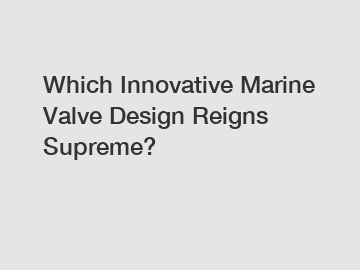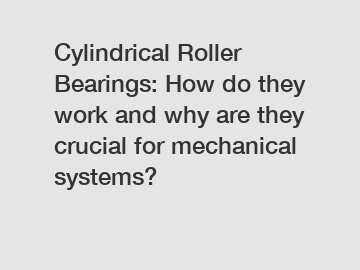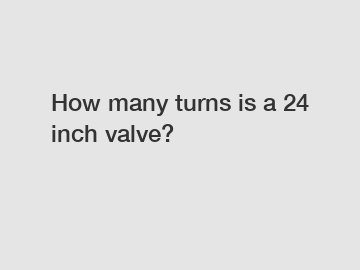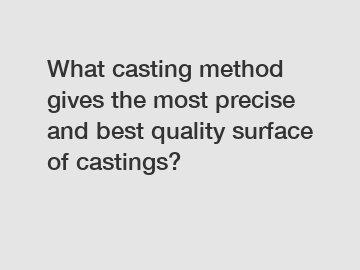Do I need a Phoenix Nozzle?
Do I need a Phoenix Nozzle?
In the interim you have two options:
1. The basic option - a $15 hookah port adapter that will allow you to attach a single inflator or octo hose.
2. The deluxe option - a $15 hookah port adapter and the $35 Trident AA53 3 LP port adapter that will allow you to attach an octo, inflator and dry suit inflator hose.
The hookah port adapter is available at vintage double hose.com.
Hookah port adapter
Bryan also sells a reproduction banjo fitting to attach an SPG for $35 (a real steal as originals used to sell for $100 if you could fnd one).
banjo fitting
As well as a long yoke (also available in the flat USD logo style) for $50:
long yoke
The AA53 adapter is a Trident part that your shop may have or can order.
Now, when you add up the $15 hookah port adapter, the $35 AA53 adapter, the $35 banjo fitting and the $50 long yoke you have $135 invested compared to the $200 or so that a Phoenix nozzle will cost a few months later, so it depends how much you want to dive it in the next few months. Or alterantively on whether you will buy another double hose reg - like most of us do.
I'd also suggest that with a Royal Aquamster, there is less incentive to upgrade to the Phoenix as the RAM is already balanced and can already use the current US Conshelf/Titan seat. As long as it has a later psi yoke (which should be the case for a model) it is good to go with perhaps a few tweaks from Vintagedouble hose.com like a new silicone diaphragm and new high flow cage valves and silicone mushroom valves.
On the other hand, RAM's often sell for more money even before you put more money into them for new hoses, mouthpieces, diaphragms, duckbills, etc, so buying a DA Aquamaster for less money and then adding a Pheonix nozzle is often a better idea. Alternatively buy a DA from Bryan at Vintage double hose that has already been rebuilt, re-hosed, re-mouthpieced and generally updated, then have him add the Phoenix nozzle later.
If you have to add new hoses, mushroom valves, diaphragm and a rebuild kit, it is not hard to put another $175 into a DA or RAM you buy off e-bay or from someone else so be aware of that when you consider the purchase price as a $200 RAM or DA will end up costing the same as a $400 DA or RAM from Bryan that is already updated, tuned and ready to dive.
The reality is that new Phoenix nozzles won't be available until at least May and Bryan is not accepting pre-orders at this time like he has in the past, I suppose to avoid any issues with the inevitable production delays that in the past sparked interest that Bryan may have interpreted as complaints rather than just plain excitement and anticipation. So...May at the earliest (I suspect July is more likely) and you'll need to check on the vintage double hose site and order one when they appear...and before they disappear.In the interim you have two options:1. The basic option - a $15 hookah port adapter that will allow you to attach a single inflator or octo hose.2. The deluxe option - a $15 hookah port adapter and the $35 Trident AA53 3 LP port adapter that will allow you to attach an octo, inflator and dry suit inflator hose.The hookah port adapter is available at vintage double hose.com.Bryan also sells a reproduction banjo fitting to attach an SPG for $35 (a real steal as originals used to sell for $100 if you could fnd one).As well as a long yoke (also available in the flat USD logo style) for $50:The AA53 adapter is a Trident part that your shop may have or can order.Now, when you add up the $15 hookah port adapter, the $35 AA53 adapter, the $35 banjo fitting and the $50 long yoke you have $135 invested compared to the $200 or so that a Phoenix nozzle will cost a few months later, so it depends how much you want to dive it in the next few months. Or alterantively on whether you will buy another double hose reg - like most of us do.I'd also suggest that with a Royal Aquamster, there is less incentive to upgrade to the Phoenix as the RAM is already balanced and can already use the current US Conshelf/Titan seat. As long as it has a later psi yoke (which should be the case for a model) it is good to go with perhaps a few tweaks from Vintagedouble hose.com like a new silicone diaphragm and new high flow cage valves and silicone mushroom valves.On the other hand, RAM's often sell for more money even before you put more money into them for new hoses, mouthpieces, diaphragms, duckbills, etc, so buying a DA Aquamaster for less money and then adding a Pheonix nozzle is often a better idea. Alternatively buy a DA from Bryan at Vintage double hose that has already been rebuilt, re-hosed, re-mouthpieced and generally updated, then have him add the Phoenix nozzle later.If you have to add new hoses, mushroom valves, diaphragm and a rebuild kit, it is not hard to put another $175 into a DA or RAM you buy off e-bay or from someone else so be aware of that when you consider the purchase price as a $200 RAM or DA will end up costing the same as a $400 DA or RAM from Bryan that is already updated, tuned and ready to dive.
Link to Disai
10 Things to Consider When Buying a Water Cannon ...
If you are in the market for purchasing a remote control water cannon (aka 'monitor' or 'turret' or 'robotic nozzle'), here are 10 things to consider before you make a decision:
1. The Cannon's Material'What it's Made of?
Not all water cannons are built alike! Riot Control applications are highly demanding and require a water cannon that is extremely robust and will last for many years in tough environments.
Many riot control vehicles have the ability to spray chemicals, dies and other additives into the water. This adds to the need to ensure that the water cannon is made of a material that will withstand those chemicals without corroding.
Stainless Steel 316L is a great choice. It is extremely durable, light weight, acid-proof, and highly resistant to corrosion from a wide variety of chemicals, including those typically used in riot control.
Before purchasing, consider whether you will use chemicals and, if so, check to be sure that the material of the water cannon you are considering to purchase is resistant to those materials.
2. Range of Rotation & Vertical Movement
Consider how much you will need the cannon to be able to rotate, both horizontally and vertically.
Unifire's water cannons for riot control, for example, can rotate a full 360º horizontally and 180º degree vertically. And, they can be set to be limited to any amount of rotation desired by simple software settings.
Whatever you choose, be sure that the cannon can maneuver sufficiently in all directions for your vehicle.
3. Capacity (Volume) & Reach
Typically, water cannons for riot control have an internal diameter of approximately 50 mm (2 inches), like Unifire's Force 50 and F50R-LT models. Generally this provides the right fit'a good balance between flowing enough to get the job done, but to not go through the scare amount of water in the tank too fast, nor to create such a high flow as to be potentially lethal.
While specifications may vary by brand somewhat, a 2' water way typically gives a maximum volume of around liters (530 US gallons) per minute at 10 bars (145 psi). You will want to be sure that the nozzle allows good performance at whatever flow your customer requires.
Unifire's JETRANGE riot control nozzle tips for its water cannons (robotic nozzles, more precisely) come with various flow discs to achieve maximum performance at the customer's specified flow requirements. Unifire also offers two sizes of smooth bore nozzles to accommodate flows typically required for riot control vehicles.
4. Understand The Control System Capabilities (PLC / Control Box / Electronics)
The electronics that control the water cannon system a crucial component to the system, and it's worth asking your supplier about them.
A few questions to ask may include:
a) Can the system control valves, including sending a pulsing signal to the valves?
b) Does the system run on a CANbus protocol (or other protocol you wish)?
c) Does the system have additional inputs and outputs? This can save a lot of money because it will enable you to hook up lights, tank level gauges/sensors and other peripheral devices that can all be controlled by the cannon's PLC. This means you can save a lot of money by not having to buy additional electronics for these purposes.
Unifire's TARGA series PLC's feature numerous digital and analogue inputs and outputs, making it easy to integrate third-party joysticks and controllers, and to control and display other systems on the vehicle.
d) Can the PLC control brushless 'BLDC' motors? BLDC motors offer much longer life, higher torque, greater accuracy, and superior performance than standard brushed DC motors used by most manufacturers.
Unifire's water cannons all come with BLDC motors, which are controlled by Unifire's TARGA PLC. (The TARGA can also control standard DC motors as well.)
e) Can the PLC be programmed for any special functions you wish, custom park position, custom limits to the movement, etc.? Unifire's TARGA PLC comes with a built-in display and easy-to-use programming buttons, allowing for complete and simple customization of your system.
f) Does the manufacturer offer a touch-screen graphical user interface (GUI)? Can multiple users have their own GUI, each with its own control access and functions? Can the GUI be customized for my vehicle? Unifire's TOPAZ GUI can do all of these things. It can display the position of each water cannon and nozzle in the system, the status of valves, tank levels, etc. And it can be programmed to have logic. For example, if cannon 1 is turned on, then first close valves 2 and 3, etc.
4. Joystick & Controller Options:
Does the supplier offer the type of controller or joystick you need? If not, does their PLC (electronics box) allow you to buy an off-the-shelf joystick you wish that is compatible with the PLC?
Unifire offers a variety of controllers, including the POINTER (see below and see YouTube video: Robotic Nozzles ' POINTER http://youtu.be/DwrjNiPt4qs), Moreover, the TARGA PLC can accommodate virtually any off-the-shelf joystick solution, allowing you to source anything you wish.
If you want to learn more, please visit our website Nozzle Check Valves.
Explore more:Resilient Seated Gate Valve - A Complete Guide
How to Choose 1/2" Three Way Ball Valve Exporter.
How to Efficiently Run BOP Control Room
Dual Disc Check Valves: Which Innovative Design Revolutionizes Flow Control?
What type of stainless steel is food grade?
How Do You Layout Radiant Tubing?
What is the purpose of casing centralizers?
5. Speed of Motion:
Does the cannon's velocity meet your specifications? Note that you want the cannon to move quickly, but not too quickly. If it's too fast, it will be difficult for the operator to hit his target.
Unifire's systems typically are set to 40º per second rotation speed, and about 20º vertically'which provides rapid movement, while still allowing the operator to control the system well. Faster systems are possible, but not recommended in most circumstances.
6. Displays:
Is the cannon system able to display the position of the cannons on a display panel or video monitor in the cab?
If not, does the system have an equivalent way to ensure that the operator knows the position of the water cannon?
'This is important to avoid wasting water.
Unifire's TARGA PLC can display all system information, including water cannon position (and even proper function of motors and other system information).
Moreover, Unifire's unique POINTER controller guides the water cannon to the exact same position and orientation of the controller itself. This way, the operator just points the controller (mounted in the cab) at his target and knows that the cannon is pointed the same way.
7. Position Feedback:
The operator must know where the cannon is pointing at all times. Since the cannons are out of sight (on the roof or bumper), however, either a display or other method of showing the cannon's position is important.
As set out above, Unifire's TARGA PLC can display all system information, including water cannon position (and even proper function of motors and other system information).
Moreover, Unifire's unique POINTER controller (see image above) guides the water cannon to the exact same position and orientation of the controller itself. This way, the operator just points the controller (mounted in the cab) at his target and knows that the cannon is pointed the same way.
8. Motor Technology'DC vs BLDC:
Nearly all brands of electric water cannons use brushed DC motors. You would think, therefore, that this must be a good solution. But it's not.
Brushless motors (also called 'BLDC' motors) offer many advantages over brushed DC motors.
BLDC motors (not brushed DC motors) are used in industrial robots, and for good reason. BLDC motors offer much longer life (around 10,000 hours, as opposed to perhaps several hundred for standard brushed DC motors), higher torque, greater accuracy, and superior performance.
All Unifire water cannons have BLDC motors.
Here are a couple of good resources to learn more about brushless motors and their advantages:
Brushless DC Motors http://www.nmbtc.com/brushless-dc-motors/why-brushless-motors/
Brushless DC Motors & Control ' How it Works http://youtu.be/ZAY5JInyHXY
9. Weight & Size:
Keeping weight and the cannon's footprint to a minimum will reduce the overall weight of the vehicle and make installation easier and more economical.
It's a good idea to compare the size and weight of competing cannons and consider this when deciding what to buy.
Unifire has made the F50R-LT specifically for riot control vehicles. It has a very small footprint, ideal for bumpers and roof mounting alike. It also makes it easy to fit in a protective cover for specifications that so require. Here is a photo:
FR50-LT riot control water cannon by Unifire AB
10. Nozzle Tip Type & Options:
Typically for riot control, the user is looking for nozzle that produces a tight, jet stream.
The length of the nozzle has little to do with the performance. Rather, a number of other factors play a role in the quality of the stream. It's a good idea to learn about the nozzles offered with the cannons and how well they shape the stream into a nice, coherent jet.
A baffled nozzle is a very good option, as it pushes the water around the baffle, which causes a vacuum to form on the outside of the baffle. This vacuum draws the water back into a tight jet, which typically coheres in a jet stream longer than smooth bore nozzles.
Another consideration of the nozzle is whether it has adjustable flow settings, so that you can match the flow to the specifications and tweak the nozzle to perform best with your pump.
Unifire's JETRANGE nozzle, for example, has been designed to produce a very tight jet stream and allow the user to mechanically adjust the flow settings by use of different sizes of baffles. It also has stream-shapers built inside to reduce the turbulence of the water, further enhancing the stream quality.
Unifire F50R-LT water cannon with integrated JETRANGE tipIf you are looking for more details, kindly visit gate valve manufacturers in usa.
How Do You Make a Tension Spring Stronger?
Ultimate Guide to EPDM Rubber Strips: 10 Must-Know Tips for Waterproofing & Weatherproofing!
How does investment casting differ from sand casting?
Which advancements are revolutionizing small bearings?
What are the advantages of using high-thrust capacity thrust ball bearings for wind turbines in the purchase stage?
Why is TIG so expensive?
How to choose the best throttle valve on a budget?



